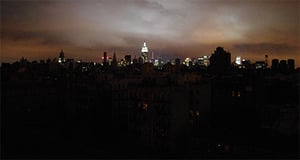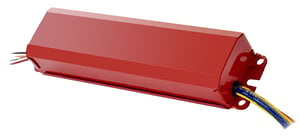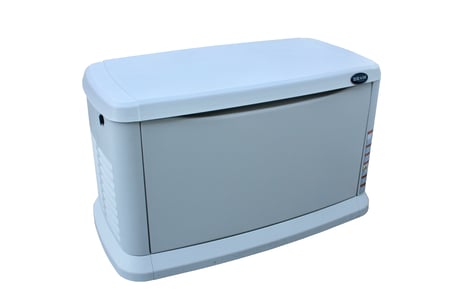Keep The Lights On

The month of July was eye opening as New York City was plagued by power outages. The first power outage occurred on July 13th and affected Manhattan for about 5 hours. The following weekend, the surrounding neighborhoods of Queens and Brooklyn were impacted by an outage. During an emergency is not the time to think about emergency lighting—yet that seemed to be the case! While Con Edison has determined the cause of the outage to be a faulty connection, the event has stirred conversations about emergency preparedness.
While codes vary throughout the country, it is universal that emergency lighting is required in all non-residential buildings. Emergency lighting can be provided to existing luminaires in various ways. This post examines the following methods: lighting inverters, backup battery packs and backup generators. Each option must provide emergency lighting for at least 90-minutes.
Inverters
Inverters are the superior choice for complying with emergency lighting requirements. Since inverters produce a pure AC sine wave, not only do inverters provide identical lumen output as normal operation, they also do not flicker or buzz. Inverters allow for centralized testing from one location. Additionally, most inverters offer monthly and annual self-testing and diagnostics in accordance with industry requirements. Inverters allow you to use ANY light fixture as your emergency egress fixture. Because of this, inverters are the ideal emergency lighting solution for operating rooms. Also, inverters offer extended run-times.
Backup Battery Packs
Backup battery packs are a popular choice for emergency lighting due to the ease of calculation. These types of products have been traditionally used because they are simple to locate. However, there are many challenges when utilizing battery packs. Battery packs produce a DC output and are not available for use with all LED fixtures. Additionally, the lumen output of the luminaire, as compared to normal operation, is reduced. The costs of battery packs used with LED fixtures is much higher than in the past and testing and maintenance costs remain high. The NEC and NFPA requires emergency lighting to be tested on a monthly and annual basis. Therefore, each individual battery pack needs to be tested. Not only does this increase the overall cost of ownership, but also requires the use of valuable manpower.
Generators
Generators provide backup power to mechanical systems in addition to lighting systems. This is especially important for critical applications, such as hospitals, where it is not feasible to wait until the power is restored following an outage. Unlike battery packs, generators provide extended run times. Emergency generators are required to start and produce power within 10 seconds. This means that the lights will temporarily go dark, making the transfer to emergency power noticeable. Emergency generators are subject to the same testing requirements as all other systems which greatly increase the cost of ownership over the life of this type of system.
When an emergency strikes, Myers EPS has you covered.
July's events occurred while it was still light outside. Since emergency lighting is only required for 90-minutes, as evening hit and darkness loomed, many buildings began to grow darker and unsafe. This poses the question, is 90-minutes truly adequate? Myers EPS inverters have run times that exceed 90-minutes, allowing individuals to safely exit commercial buildings or (as in New York City's instance) to shelter in place.


